order

Coleoptera
“Adult Beetles”

Coleoptera
“Larval Beetles”

Diptera
“True Flies”

Ephemeroptera
“Mayflies”

Hemiptera
“True Bugs”

Lepidoptera
“Aquatic Caterpillars, Snout Moths”

Megaloptera
“Alderflies, Dobsonflies, and Fishflies”

Odonata
“Dragonflies and Damselflies”

Plecoptera
“Stoneflies”

Trichoptera
“Caddisflies”
family
Hydropsychidae
Hydropsyche
“Seine-net Weaver Caddisflies”
Genus Overview
The genus Hydropsyche is the largest in the Hydropsychidae family, including 80 species in America North of Mexico. Larvae build stationary retreats of silk, detritus, and rock fragments. A part of the entrance of the retreat often has a circular silken net woven to its upstream end, protruding across the current to filter bits of suspended food from the water. This how they earned their common name, “net spinners.” A larva defends its territory by making warning sounds as it scrapes its front femora against washboard-like files on the underside of the head.
Characteristics
POLLUTION TOLERANCE
Southeast: 0 - 8.1
Upper Midwest: 1 - 7
Midwest: 2.6
Mid-Atlantic: 4
0 = least tolerant, 10 = most tolerant
FEEDING HABITS
Collector / Filterer
Engulfer / Predator
Scraper / Grazer
Engulfer / Predator
Scraper / Grazer
MOVEMENT
Clinger
DISTRIBUTION
Widespread (east of the Rocky Mtns.)
HABITAT
Lotic-erosional
Diagnostic Characters
Order
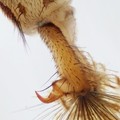
Prolegs With Single Hook
Family
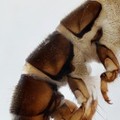
All Nota Sclerotized
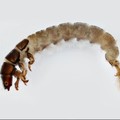
Retreat
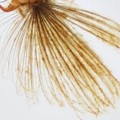
Setal Fan On Prolegs
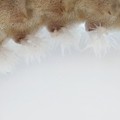
Ventral Branched Abdominal Gills
+ Expanded Character List
Order:
Larvae: Wings/wing pads absent. Eye spots present, but compound eyes absent. Antennae usually small, inconspicuous. Three pairs of segmented legs present on thorax. Pair of anal prolegs, each with single hook, located on last abdominal segment. Larvae can be free-living, in silken retreats attached to substrate, or in usually-portable tubes or cases made of sand, rocks, or plant material.
Family:
Pro-, meso-, and metanota entirely covered by sclerites. Ventral side of abdomen with rows of branched gills. Conspicuous tuft or fan of long hairs on each anal proleg. Anal claw with stout apical hook. Larvae building stationary retreats of silk, detritus, and rock fragments and add a silken net for filter feeding.
Genus:
Prosterum with a pair of large sclerites, Abdominal sternum 8 with pair of sclerites, Posterior ventral apotome small, abdominal gills with 10 filaments, foretrochantins usually forked, but not always

Lateral




